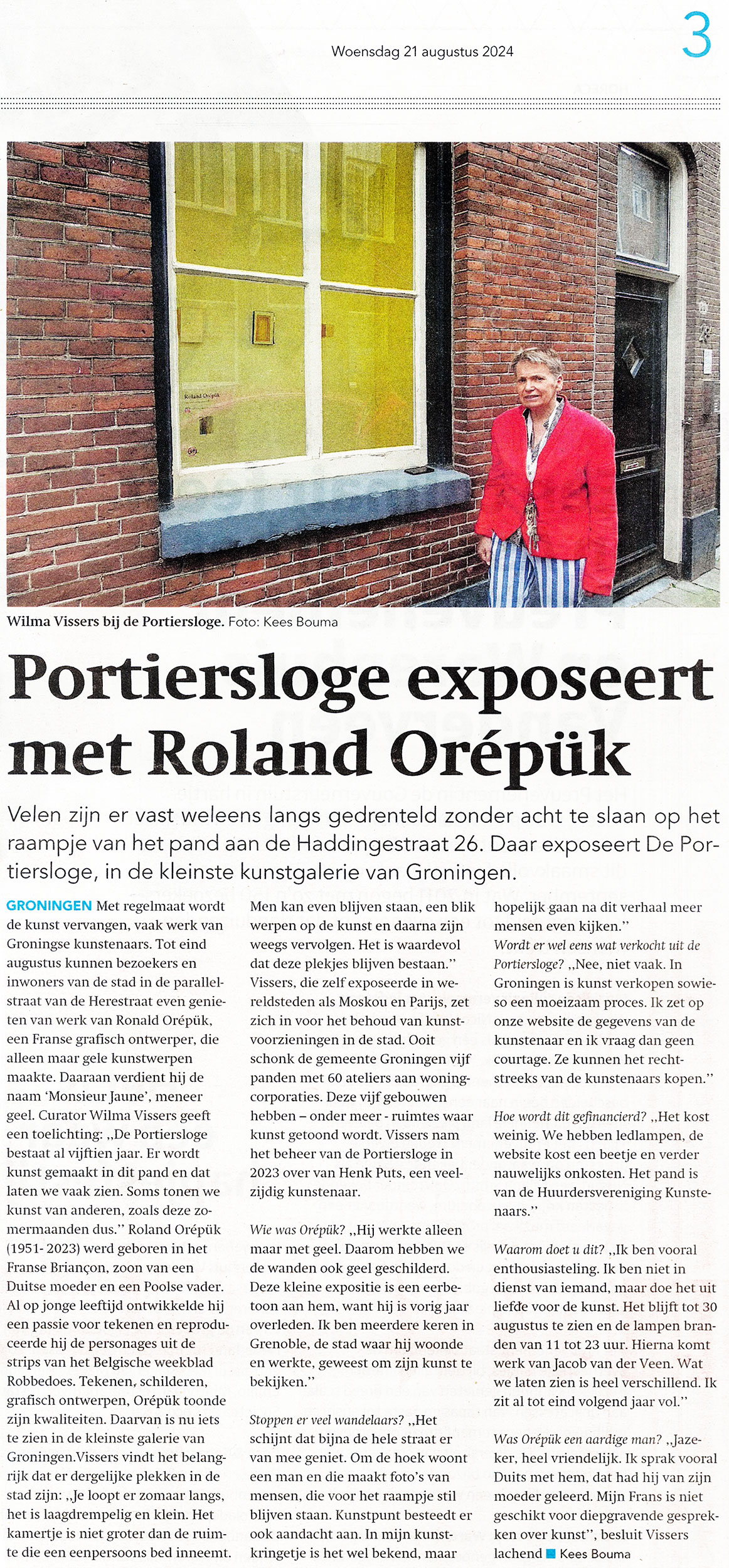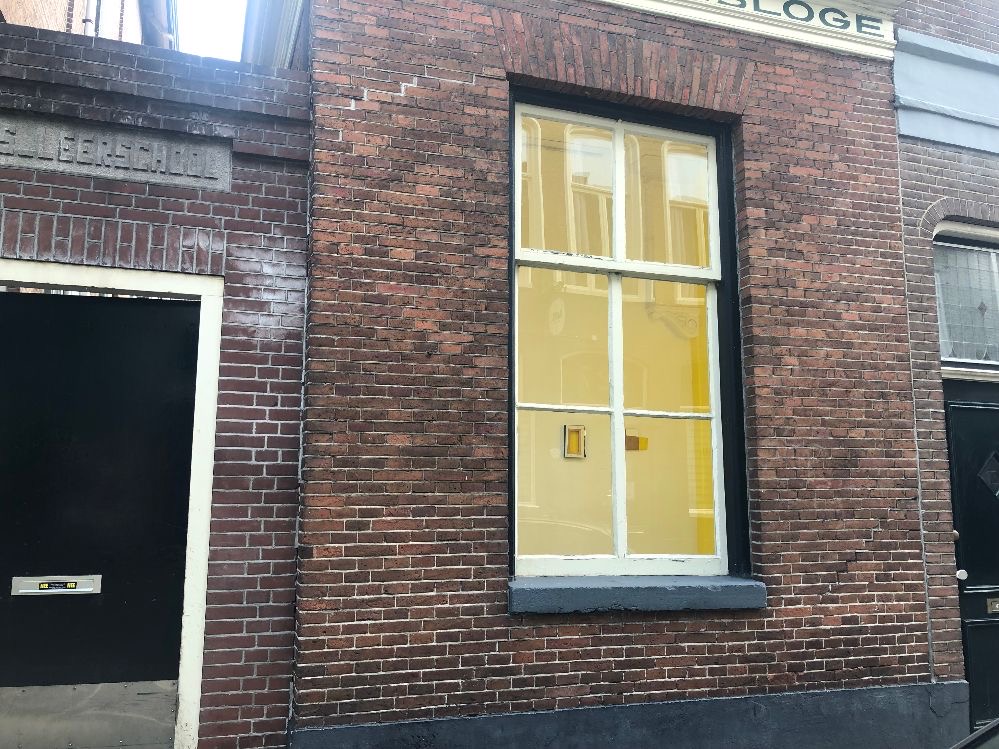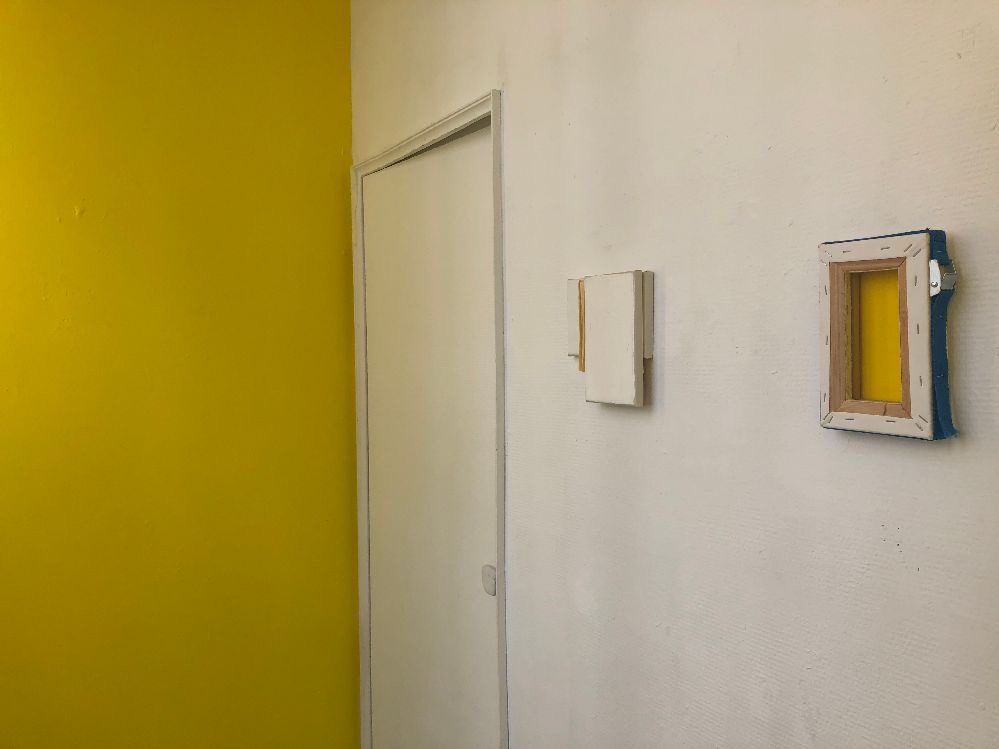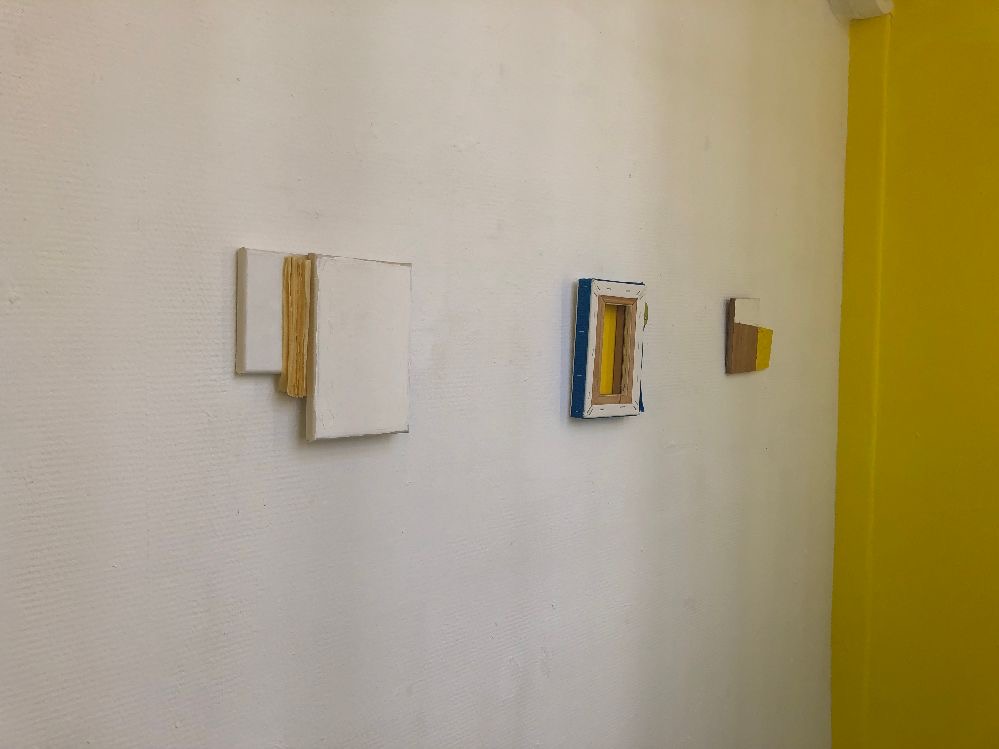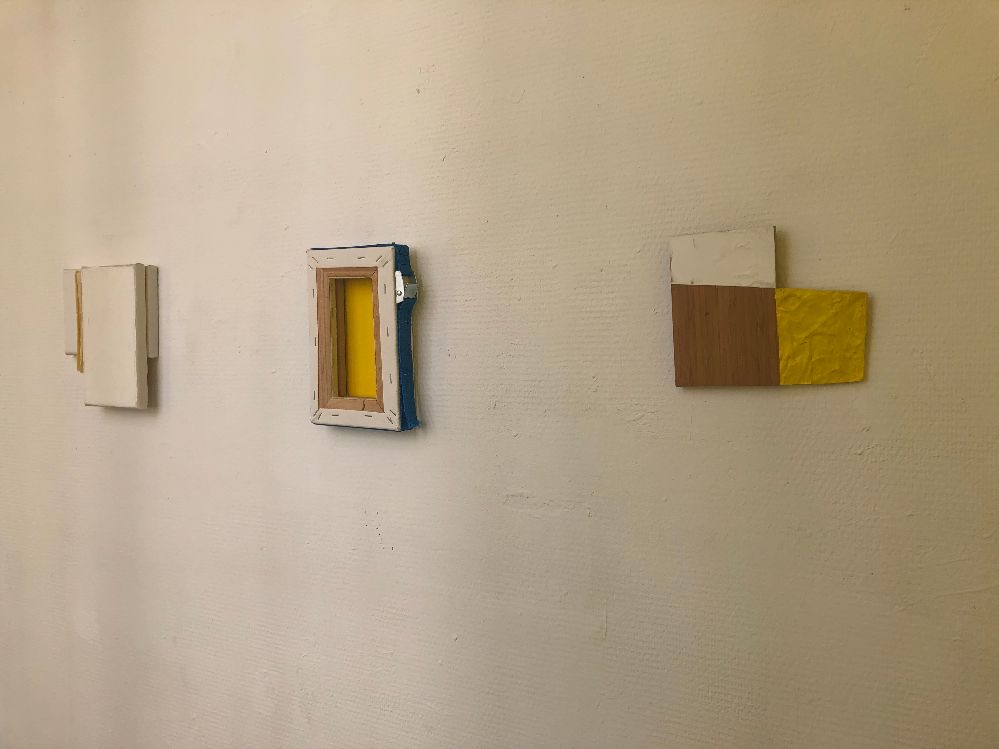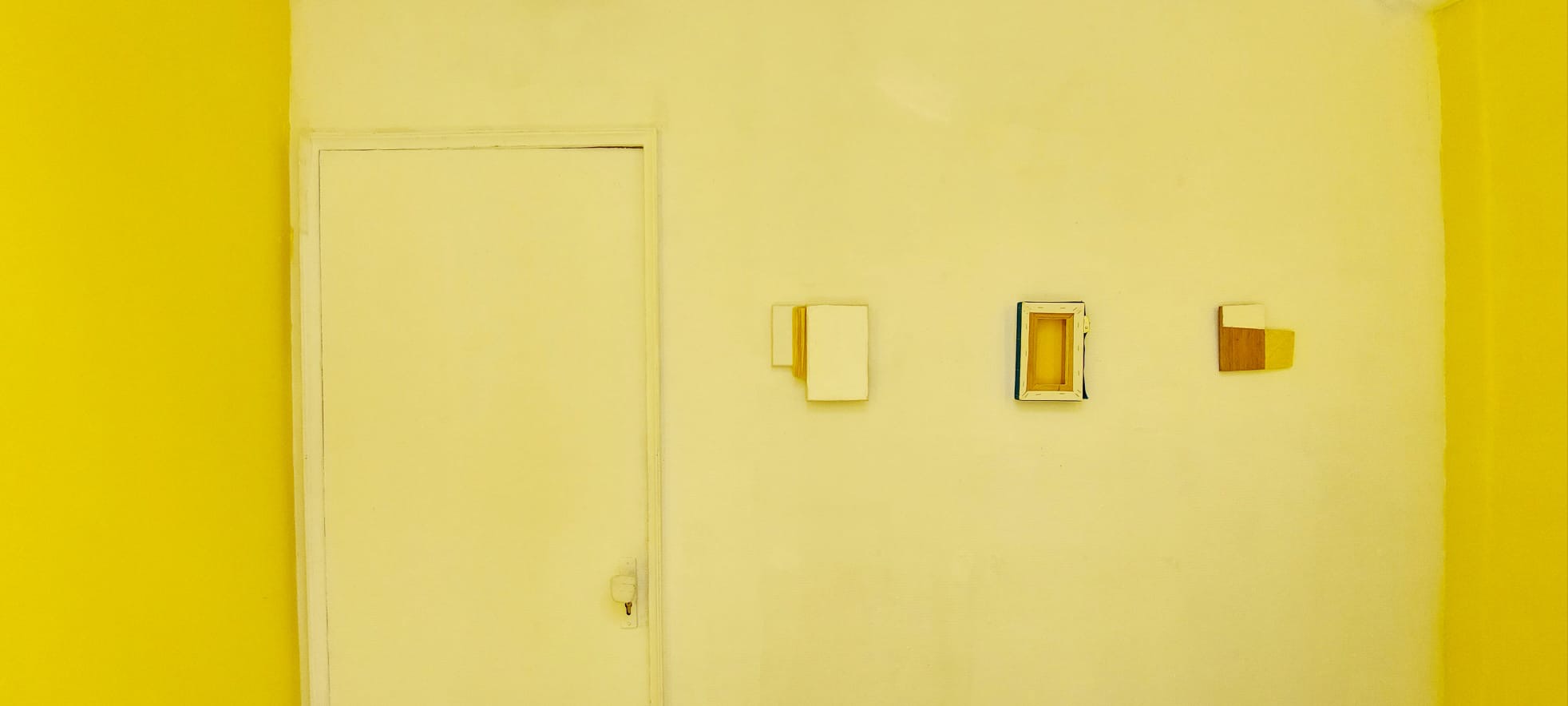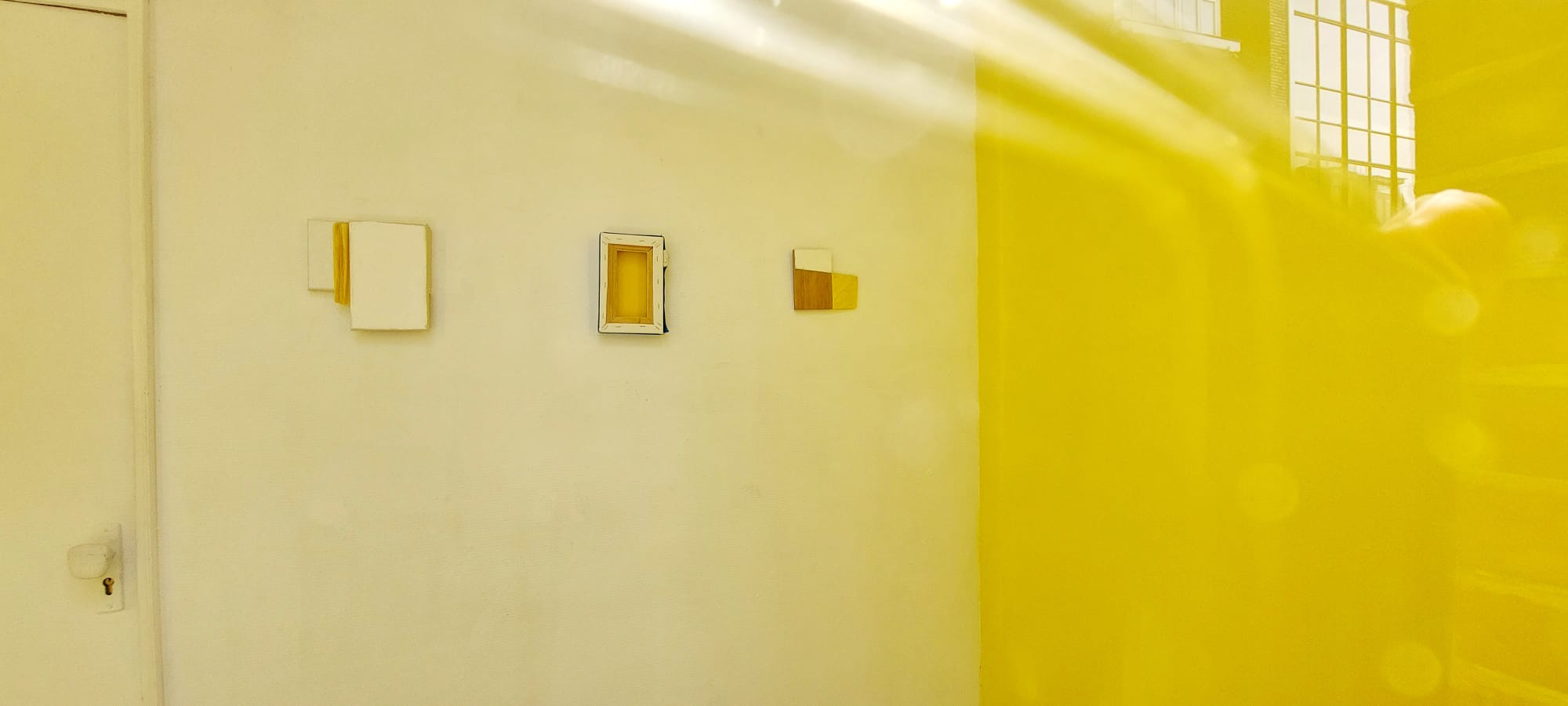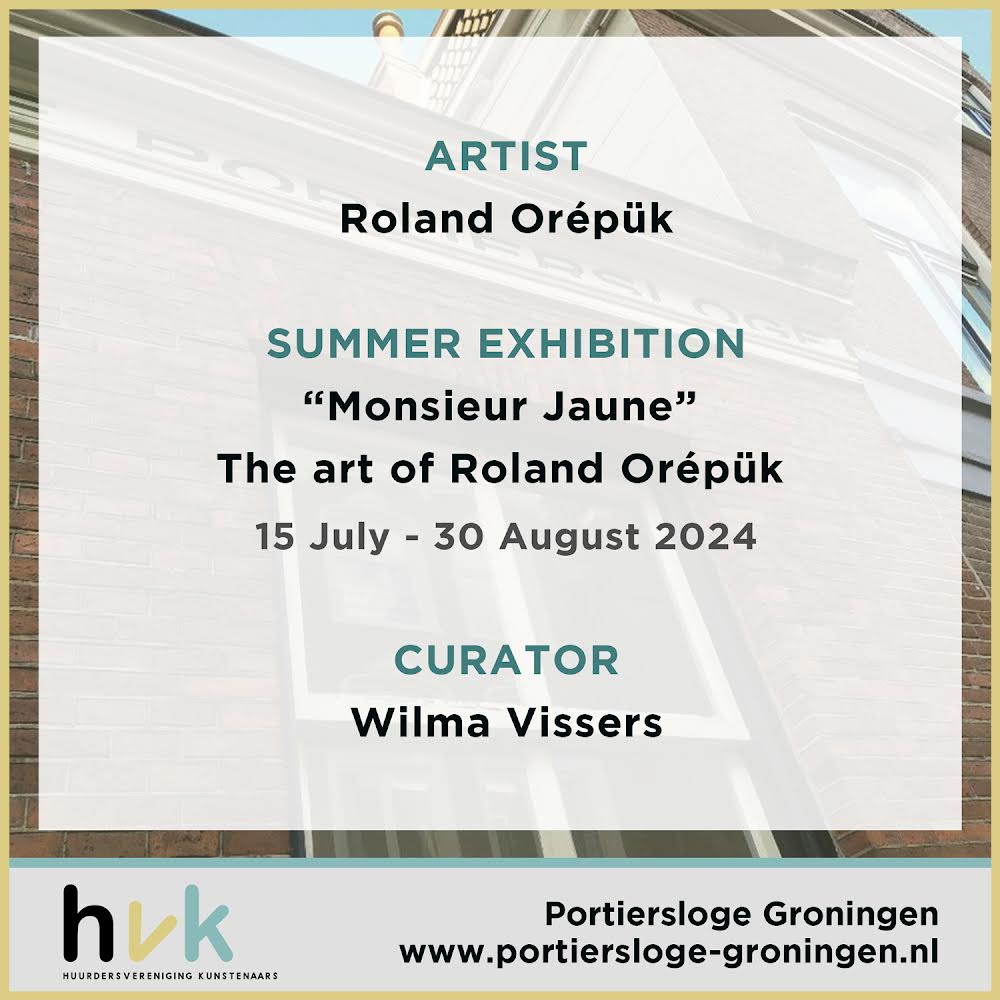New Exhibition in Portiersloge, by artist – Roland Orépük
New exhibition by artist Roland Orépük will be open from 15 july until 30 august 2024 in Portiersloge Groningen.
About the work of Roland Orépük
Roland Orépük (Parijs, 23 juli 1950 – aldaar, 28 november 2023) was een Frans kunstschilder en grafisch ontwerper.
Roland Orépük werd geboren in Briançon op 23 juli 19501 allochtone ouders. Zijn vader, Pools, werd geboren in Brest-Litovsk. Zijn moeder, Duitse, werd in maart geboren (Baden- Württemberg).
Al op zeer jonge leeftijd ontwikkelde hij een passie voor tekenen en reproduceerde hij de personages uit de strips van het Belgische weekblad Robbedoes. Als tiener ontdekte hij de schilderkunst, die hij als autodidactisch kunstenaar verkende. Later leerde hij graveren door de cursussen van Jean-Marie Estèbe te volgen als gratis auditor aan de École supérieure d’art de Grenoble (1977-1980).
Tekenaar, karikaturist, grafisch ontwerper, Roland Orépük beheerst vele tekentechnieken. Het was op deze gebieden dat hij zijn professionele activiteit uitoefende, eerst in een ontwerpbureau tot 1979, daarna door zijn eigen structuur te creëren. Tegelijkertijd ontwikkelde hij zijn geschilderde werk en zette hij zich in voor de hedendaagse kunst in Grenoble.
Als schilder stelde Roland Orépük zich open voor abstractie door Max Bill te ontdekken, aan wie het Musée de Grenoble in 1969 een monografische tentoonstelling wijdde. Maar het waren Kazimir Malevich en de ontdekking van de Russische avant-garde in Lugano in 1988 die zijn toewijding aan wat hij reductieve kunst noemde, bepaalden2. Zijn eerste solotentoonstelling had hij in 1977 in Grenoble met de steun van het Regionaal Comité voor Hedendaagse Kunst (CRAC).
Hij was lid van de Union of Plastic Arts (UAP), die in 1979 het Regionaal Comité voor Hedendaagse Kunst (CRAC) werd. Hij richtte de groep “Fin de série” (1981-1986) op met Daniel Canato, Charles Payan, Christine Coblentz en Denis Ruggieri, en vervolgens de groep RADICAL (1987-1997) met Bernard Béraud en Charles Payan.
Roland Orépük werd in 1989 lid van Réalités Nouvelles en lid van het comité van
20073 tot 2021. Hij draagt bij aan het collaboratieve en participatieve kunstcentrum “Abstract Project” dat voortkomt uit Réalités Nouvelles. In 2020 schreef hij het voorwoord van de catalogus “Geel” (2020).
In 2011 richtte Roland Orépük de “Internationale Biënnale van Niet-Objectieve Kunst” op in Pont-de-Claix, in de Grands Moulins de Villancourt. De catalogus van de Biënnale wordt ingeleid door Petra Bungert. Het concept werd in 2019 opgepakt door Billy Gruner in Sydney, Australië. Satelliet Biënnales4 worden gecreëerd parallel aan de6e Biënnale, die de tiende verjaardag markeert5.
Roland Orépük, né à Briançon (Hautes-Alpes) le 23 juillet 1950 et mort le 28 novembre 2023 à Saint-Martin-d’Hères, est un peintre et graphiste français.
Roland Orépük naît à Briançon le 23 juillet 19501 de parents immigrés. Son père, polonais, est né à Brest-Litovsk. Sa mère, allemande, est née à March (Bade- Wurtemberg).
Très jeune, il se passionne pour le dessin, reproduisant les personnages des bandes dessinées de l’hebdomadaire belge Spirou. Adolescent, il découvre la peinture qu’il explore en autodidacte. Plus tard, il apprend la gravure en suivant en auditeur libre les cours de Jean-Marie Estèbe à l’École supérieure d’art de Grenoble (1977-1980).
Dessinateur-projeteur, caricaturiste, graphiste, Roland Orépük maîtrise de nombreuses techniques de dessin. C’est dans ces domaines qu’il exerce son activité professionnelle, d’abord dans un bureau d’étude jusque 1979, puis en créant sa propre structure. Il développe parallèlement son œuvre peint et s’engage pour l’art contemporain à Grenoble.
Peintre, Roland Orépük s’ouvre à l’abstraction en découvrant Max Bill, à qui le musée de Grenoble consacre une exposition monographique en 1969. Mais c’est Kasimir
Malevitch et la découverte à Lugano, en 1988, de l’avant-garde russe qui déterminent son engagement dans ce qu’il nomme l’art réductif2. Il réalise sa première exposition individuelle, en 1977 à Grenoble avec le soutien du Comité Régional d’Art Contemporain (CRAC).
Il est membre de l’Union des Arts plastiques (UAP) qui devient le Comité régional d’art contemporain (CRAC) en 1979. Il fonde le groupe « Fin de série » (1981-1986) avec Daniel Canato, Charles Payan, Christine Coblentz et Denis Ruggieri, puis le groupe RADICAL (1987-1997) avec Bernard Béraud et Charles Payan.
Roland Orépük devient sociétaire de Réalités Nouvelles en 1989, membre du comité de 20073 à 2021. Il contribue au Centre d’art collaboratif et participatif « Abstract Project » qui émane de Réalités Nouvelles. Il rédige en 2020 la préface du catalogue « Jaune » (2020).
En 2011, Roland Orépük fonde à Pont-de-Claix, aux Grands moulins de Villancourt, la
« Biennale internationale d’art non objectif ». Le catalogue de la Biennale est préfacée par Petra Bungert. Le concept est repris par Billy Gruner à Sydney, Australie, en 2019. Des Biennales satellites4 sont créées en parallèle de la 6ème Biennale qui marque le dixième anniversaire5.
(English)
Roland Orépük (23 July 1950 – 28 November 2023) was a French painter and graphic designer.
Roland Orépük was born in Briançon on July 23, 19501 immigrant parents. His father, Polish, was born in Brest-Litovsk. His mother, German, was born in March (Baden- Württemberg).
At a very young age, he developed a passion for drawing, reproducing the characters from the comic strips of the Belgian weekly Spirou. As a teenager, he discovered painting, which he explored as a self-taught artist. Later, he learned engraving by following Jean- Marie Estèbe’s courses as a free auditor at the École supérieure d’art de Grenoble (1977- 1980).
Draftsman, caricaturist, graphic designer, Roland Orépük masters many drawing techniques. It was in these fields that he carried out his professional activity, first in a design office until 1979, then by creating his own structure. At the same time, he developed his painted work and became committed to contemporary art in Grenoble.
As a painter, Roland Orépük opened up to abstraction by discovering Max Bill, to whom the Musée de Grenoble devoted a monographic exhibition in 1969. But it was Kazimir Malevich and the discovery of the Russian avant-garde in Lugano in 1988 that determined his commitment to what he called reductive art2. He had his first solo exhibition in 1977 in Grenoble with the support of the Regional Committee for Contemporary Art (CRAC).
He was a member of the Union of Plastic Arts (UAP), which became the Regional Committee for Contemporary Art (CRAC) in 1979. He founded the group “Fin de série” (1981-1986) with Daniel Canato, Charles Payan, Christine Coblentz and Denis Ruggieri, then the group RADICAL (1987-1997) with Bernard Béraud and Charles Payan.
Roland Orépük became a member of Réalités Nouvelles in 1989 and a member of the 2007 committee3 to 2021. He contributes to the collaborative and participatory art center “Abstract Project” which emanates from Réalités Nouvelles. In 2020, he wrote the preface to the “Yellow” catalogue (2020).
In 2011, Roland Orépük founded the “International Biennial of Non-Objective Art” in Pont- de-Claix, at the Grands Moulins de Villancourt. The catalogue of the Biennale is prefaced by Petra Bungert. The concept was taken up by Billy Gruner in Sydney, Australia, in 2019. Satellite Biennials4 are created in parallel with the6th Biennale which marks the tenth anniversary5.
